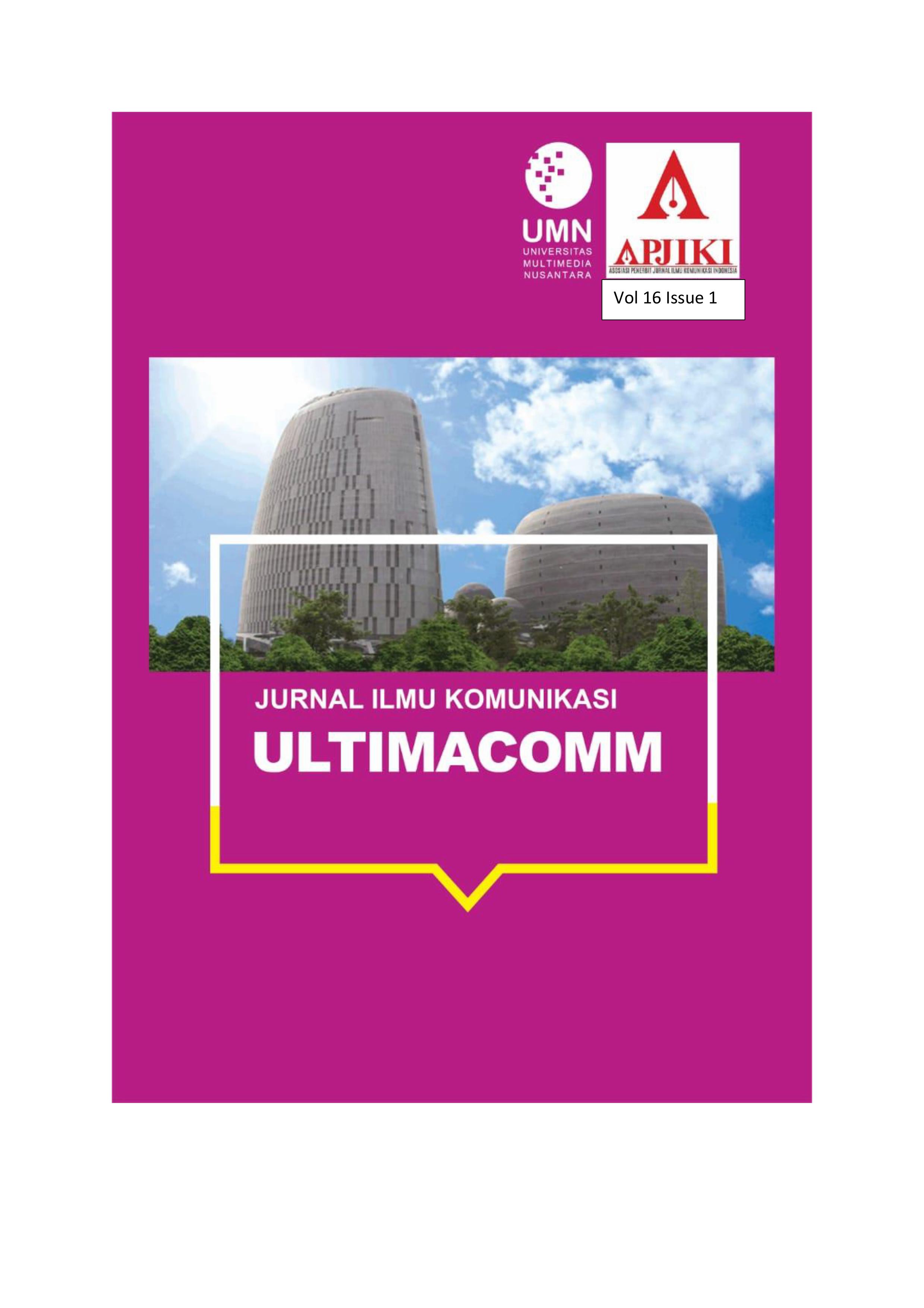Environmental Journalism on Primate Conservation and Owa Coffee Reporting : An Autoethnography
DOI:
https://doi.org/10.31937/ultimacomm.v16i1.3789Keywords:
autoethnography, CNN Indonesia, documentary, environmental journalism,Abstract
Global coffee consumption continues to increase, but the threat of climate change is real and felt in the quality and quantity of coffee production. Indonesia as one of the coffee producing countries also faces problems caused by various factors, one of which is land conversion. Since 2008, Yayasan SwaraOwa has been running the Coffee and Primate Conservation Project in Pekalongan, Central Java, Indonesia. The project's goal is to establish sustainable conservation efforts for Javan gibbons by establishing small to medium-sized businesses for the local communities that surround the gibbon forest. Kopi Owa, or Owa coffee, is the brand that created with the goal of promoting shade-grown coffee as a forest product that comes from the Javan gibbon's habitat. CNN Indonesia reported on the Javan Gibbon conservation program and the transformation of communities from loggers and poachers to coffee farmers in documentary, feature article and photo series formats. This research uses autoethnographic methods to explain the pre-production, production and post-production processes of environmental journalism on Owa coffee, primate conservation, and community economic empowerment reporting.
Downloads
References
"‹Angka, A. W. A. (2021). Dampak Perubahan Iklim Terhadap Produktivitas Kopi Robusta Di Desa Kurrak Kecamatan Tapango Kabupaten Polewali Mandar. Media Agribisnis, 5(2), 133–139. https://doi.org/10.35326/agribisnis.v5i2.1594
"‹Armein, F. (2019, December 6). Journalists dive deeper into how climate change is impacting their favorite drink. Ekuatorial.
"‹Ayawaila, G. (2008). Dokumenter"¯: dari ide sampai produksi (V. Wardhana, Ed.). FFTV-IKJ Press.
"‹Biodiversity Story Grants. (2021, October 18). Earth Journalism Network.
"‹Chang, H. (2008). Autoethnography as Method. https://www.researchgate.net/publication/40010651
"‹Chemura, A., Mudereri, B. T., Yalew, A. W., & Gornott, C. (2021). Climate change and specialty coffee potential in Ethiopia. Scientific Reports, 11(1). https://doi.org/10.1038/s41598-021-87647-4
"‹Christoff, P. (2008). The Bali roadmap: Climate change, COP 13 and beyond. Environmental Politics, 17(3), 466–472. https://doi.org/10.1080/09644010802065807
"‹Climate Change Media Partnership. (n.d.). Earth Journalism Network.
"‹Coffee_Report_and_Outlook_April_2023_-_ICO. (n.d.).
"‹Desti Parahita, G. (2017). The Practice of Indonesia's Environmental Reporters: Competence and Challenges. In Asian Journal of Media and Communication (Vol. 1, Issue 1).
"‹Fajar, A., Komunikasi, J. I., Komunikasi, F., & Informatika, D. (2011). JURNALISME LINGKUNGAN YANG SADAR LINGKUNGAN. In 20 KomuniTi (Issue 1).
"‹Fox, B. (2017). Documentary Media. Routledge. https://doi.org/10.4324/9781315559438
"‹Frome, M. (1998). Green ink"¯: an introduction to environmental journalism. University of Utah Press.
"‹Gokavi, N., & Kishor, M. (2020). Impact of climate change on coffee production: An overview. ~ 1850 ~ Journal of Pharmacognosy and Phytochemistry, 9(3), 1850–1858. www.phytojournal.com
"‹indonesian-coffee-statistics-2022. (n.d.).
"‹Parahita, G. D. (2017). The Practice of Indonesia's Environmental Reporters: Competence and Challenges. In Asian Journal of Media and Communication (Vol. 1, Issue 1).
"‹Perhutani. (n.d.). Perhutani. Retrieved September 19, 2024, from https://www.perhutani.co.id/tentang-kami/struktur-organisasi/divisi-regional/jateng/kph-pekalongan-timur/
"‹Pham, Y., Reardon-Smith, K., Mushtaq, S., & Cockfield, G. (2019). The impact of climate change and variability on coffee production: a systematic review. Climatic Change, 156(4), 609–630. https://doi.org/10.1007/s10584-019-02538-y
"‹Rademakers, L. (2004). Examining the Handbooks on Environmental Journalism: A Examining the Handbooks on Environmental Journalism: A Qualitative Document Analysis and Response to the Literature Qualitative Document Analysis and Response to the Literature. https://digitalcommons.usf.edu/etd/1207
"‹Ramadhillah, B., & Masjud, Y. I. (2024). Climate change impacts on coffee production in Indonesia: A review. Journal of Critical Ecology, 1(1), 1–7.
"‹Setiawan, A., & Mujianto, M. (2015). #1_Final report_Coffee and Primate Conservation Project 2015.
"‹Setiawan, A., Suryo Nugroho, T., Wibisono, Y., Ikawati, V., & Sugardjito, J. (n.d.). Population density and distribution of Javan gibbon (Hylobates moloch) in Central Java, Indonesia.
"‹Shakka, A. (2019). BERBICARA AUTOETNOGRAFI: METODE REFLEKTIF DALAM PENELITIAN ILMU SOSIAL 15-24 (Vol. 14, Issue 1). http://journal.unhas.ac.id/index.php/jlb
"‹Tentang Kami. (n.d.). Ekuatorial. Retrieved September 24, 2024, from https://www.ekuatorial.com/tentang/
Downloads
Published
How to Cite
Issue
Section
License
Copyright (c) 2024 Aditya Heru Wardhana

This work is licensed under a Creative Commons Attribution-NonCommercial-ShareAlike 4.0 International License.
Ultimacomm Jurnal Ilmu Komunikasi allows readers to read, download, copy, distribute, print, search, or link to its articles' full texts and allows readers to use them for any other lawful purpose. The journal allows the author(s) to hold the copyright without restrictions. Finally, the journal allows the author(s) to retain publishing rights without restrictions
1. Authors are allowed to archive their submitted article in an open access repository
2. Authors are allowed to archive the final published article in an open access repository with an acknowledgment of its initial publication in this journal















